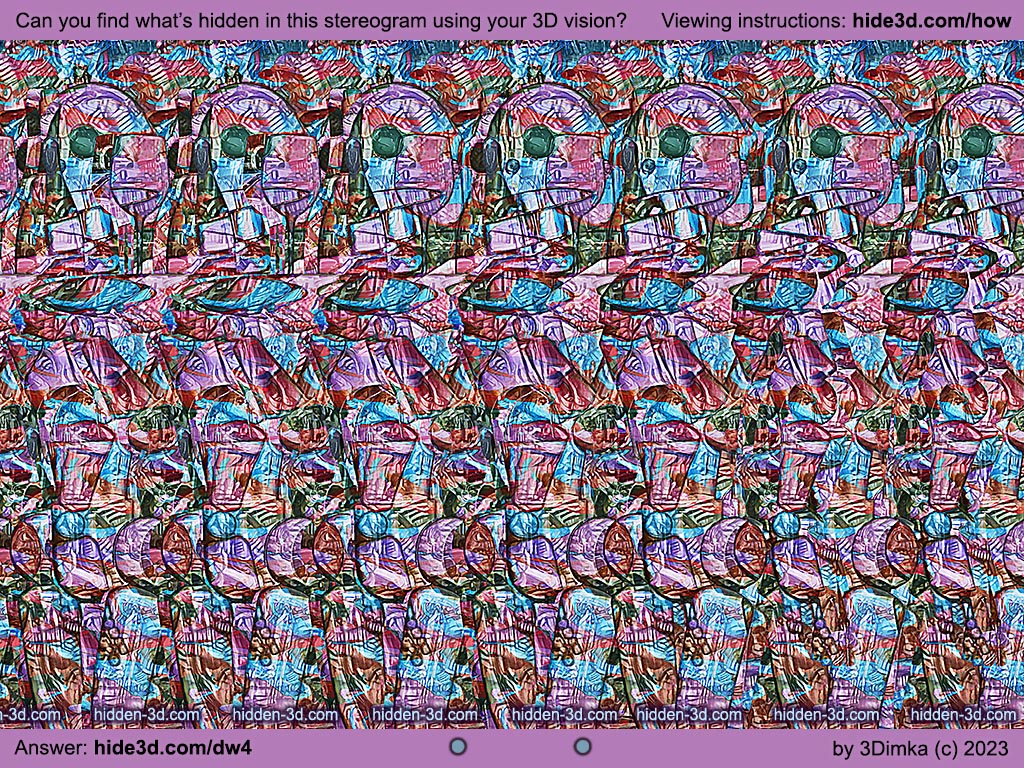There’s a saying that goes, those who do not remember the mistakes of the past are doomed to repeat them. I personally think this applies strongly to fashion, as the current trend for crop tops attests. But that’s not really the subject of this article.
This article is about stereograms. If you were around in the 1990s, you might call these Magic Eye pictures, from the popular book series at the time. Computer technology made them possible at that point, and people just obsessed over them for a short time. And then, just as quickly, faded away.
Well, they’re back. Or at least I’ve rediscovered them. And I’m sharing my discovery with you.
What is a stereogram?

This is a stereogram. More precisely, it’s an autostereogram. It’s a very specific kind of computer generated image. It relies on the work of several scientists in the 19th century who began to understand how depth perception works. You see (or maybe you don’t see), there’s a 3D image hidden in this autostereogram. It just takes discipline to see it.
The pattern you see before you is constructed so that if you can make one eye see one part of it, while the other eye sees another part of it, you’ll see a hidden image in 3D. Most people can do this with some practice. Make sure the image takes up at least half of your field of view. This will make it easier. Then let your eyes relax until you start seeing double. Keep relaxing and the 3D image will start to appear. At least that’s how it works for most people. Some people can’t do it at all, and it’s very frustrating.
Stereograms are alive and well
If the idea of these images is nothing but a painful memory, you’re probably not going to like this. There are still people making stereograms and doing a very good job of it. Take a look at the site for the person who created the image above, Hidden3D.com. Not only have the assembled a great collection of Magic-Eye-like images, they’ve taken the tech further. In some cases they’ve been able to eliminate color from the background and only have the 3D image in color. They’ve also created full 3D videos using the technology. They are a little hard to get into — I recommend “finding” the 3D before pressing play, and keeping your eyes out of focus.
Will this tech get popular again?
I know there are those people who really hope not. And I do think it’s kind of a niche thing at this point. You see, about every 15-20 years, someone thinks 3D is a great idea. Last time it was 3D televisions, which gave most people headaches and provided terrible picture quality. The trend comes and goes, leaving people with nothing but bad memories. And so I don’t expect stereograms to make a big splash. But if you’re the sort of person who does enjoy them, you can marvel at the hard work that’s been done.


